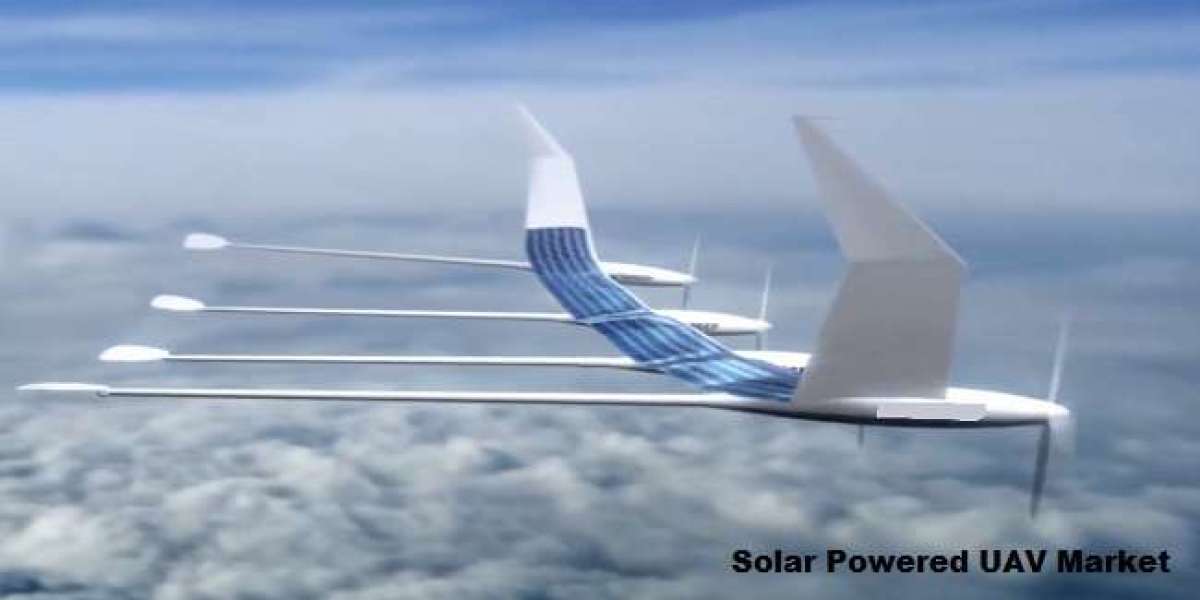According to TechSci Research report, “Solar Powered UAV Market - Global Industry Size, Share, Trends, Competition Forecast & Opportunities, 2029F”, the Global Solar Powered UAV market was valued at USD 579.28 Million in 2023 and is expected to reach USD 801.05 Million by 2029 with a CAGR of 5.57% during the forecast period. Solar-powered unmanned aerial vehicles (UAVs) are emerging as an innovative solution in the drone market, offering unique advantages over traditional UAVs. Unlike conventional drones that rely solely on battery power, solar-powered UAVs use solar energy captured by onboard photovoltaic cells to extend flight durations and recharge batteries during operations.
This enables them to perform longer missions with minimal environmental impact, reducing the need for frequent recharging or refueling. As industries increasingly seek efficient, eco-friendly alternatives, solar-powered UAVs are becoming more attractive for applications such as surveillance, monitoring, delivery services, and environmental research.
A key factor driving the growth of the global solar-powered UAV market is the increasing focus on sustainability and reducing carbon footprints. Solar-powered UAVs align with global trends towards cleaner energy and green technologies. As businesses and governments prioritize eco-friendly solutions, these UAVs offer a way to minimize emissions and reliance on fossil fuels.
In sectors like agriculture, solar-powered drones are being utilized for precision farming, where they offer sustainable monitoring of crops and soil health, reducing the need for traditional, energy-intensive methods. This trend towards environmental sustainability is encouraging investment in solar-powered UAV technologies.
The ongoing improvement in lightweight, high-performance solar cells is another crucial driver behind the market's expansion. As manufacturers develop more efficient solar panels that can capture more energy in a smaller, lighter form, solar UAVs can achieve longer operational times without compromising performance. This trend allows UAVs to be deployed in more diverse environments and applications, from delivering goods in remote areas to monitoring large, inaccessible ecosystems. The efficiency of solar panels is increasing, allowing UAVs to perform effectively even under suboptimal sunlight conditions, expanding their usability for various industries.
In addition, the growing adoption of solar-powered UAVs for defense and military applications is contributing to market growth. These UAVs are becoming essential tools for intelligence gathering, surveillance, and reconnaissance missions due to their long endurance, making them ideal for operations in regions with limited resources. The demand for advanced surveillance capabilities in conflict zones, border security, and peacekeeping missions is driving innovation in this field.
Browse over market data Figures spread through xx Pages and an in-depth TOC on "Global Solar Powered UAV Market.”
https://www.techsciresearch.com/report/solar-powered-uav-market/22069.html
Global Solar Powered UAV Market is segmented into type, component type, application, and region.
The global solar-powered UAV market is segmented by type into fixed-wing and rotorcraft. Among these, the fixed-wing segment is the largest and fastest growing due to its advantages in endurance and coverage area. Fixed-wing UAVs are designed for long-range, high-altitude missions, making them ideal for surveillance, reconnaissance, and environmental monitoring. Their ability to carry heavier payloads and cover large areas with high efficiency makes them highly sought after in both defense and commercial applications. As advancements in solar technology improve the energy efficiency of fixed-wing UAVs, their operational capabilities continue to expand, enhancing their popularity in various sectors.
Rotorcraft UAVs, while not growing as rapidly as fixed-wing models, are still significant in specific applications, particularly in tasks that require vertical take-off and landing (VTOL) capabilities. These UAVs are useful for operations in urban environments, agricultural monitoring, and emergency response, where maneuverability and precise control are crucial. While their endurance is generally lower than that of fixed-wing UAVs, the growing demand for flexible and adaptable solutions in crowded or complex environments is driving the interest in rotorcraft solar-powered UAVs.
Based on region, In 2023, Asia Pacific emerged as the fastest growing region for solar-powered UAVs. The rapid adoption of UAV technologies in countries like China, Japan, and India, driven by advancements in solar power integration and increasing demand for surveillance and environmental monitoring, is fueling this growth. The region’s focus on sustainable and energy-efficient technologies, coupled with a growing emphasis on defense modernization and commercial applications, contributes to the surge in market activity. As governments in Asia Pacific continue to invest in research and development for UAV technologies, the region is expected to maintain its momentum in the forecast period.
Major companies operating in Global Solar Powered UAV Market are:
- AeroVironment, Inc.
- Airbus S.E.
- The Boeing Company
- BAE systems plc
- Barnard Microsystems Ltd
- C-Astral d.o.o.
- Lockheed Martin Corporation
- ETH Zurich’s Autonomous Systems Lab (ASL)
- Google LLC.
- Sunlight Aerospace
Download Free Sample Report
https://www.techsciresearch.com/sample-report.aspx?cid=22069
Customers can also request for 10% free customization on this report.
“The Global Solar Power Unmanned Aerial Vehicle (UAV) Market is a dynamic and innovative sector that is gaining prominence in various industries. Solar-powered UAVs harness renewable energy from the sun to achieve long-endurance flight, making them eco-friendly and cost-effective alternatives to traditional drones. This market is driven by the growing demand for sustainable and long-duration aerial solutions in applications such as agriculture, environmental monitoring, surveillance, and telecommunications.
Advancements in solar technology have significantly improved the efficiency of photovoltaic panels, allowing solar drones to operate even in challenging lighting conditions. However, challenges related to weather dependence and energy storage solutions for night-time operations need to be addressed for the market's continued growth. The Global Solar Power UAV Market holds immense potential for revolutionizing aerial operations with its sustainable and extended flight capabilities”, said Mr. Karan Chechi, Research Director of TechSci Research, a research-based management consulting firm.
“Solar Powered UAV Market –Global Industry Size, Share, Trends, Opportunity, and Forecast, Segmented By Type (Fixed Wing, Rotorcraft), By Component Type (Propulsion System, Airframe, Guidance Navigation and Control System, Payload), By Application (Defense, Commercial), By Region, By Competition, 2019-2029F”, has evaluated the future growth potential of Global Solar Powered UAV Market and provides statistics & information on market size, structure and future market growth. The report intends to provide cutting-edge market intelligence and help decision makers take sound investment decisions. Besides, the report also identifies and analyzes the emerging trends along with essential drivers, challenges, and opportunities in Global Solar Powered UAV Market.
Contact Us-
TechSci Research LLC
420 Lexington Avenue, Suite 300,
New York, United States- 10170
M: +13322586602
Email: [email protected]
Website: www.techsciresearch.com








